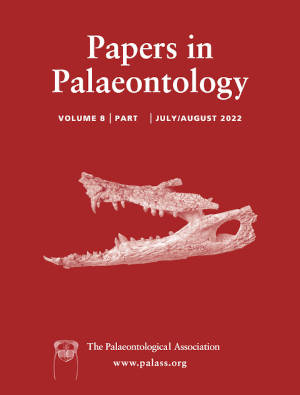Article: Carboniferous horseshoe crab musculature suggests anatomical conservatism within Xiphosurida
Publication: Papers in Palaeontology
Volume:
8
Part:
1
Publication Date:
2022
Article number:
e1403
Author(s):
Russell D. C. Bicknell, Jessica N. Tashman, Gregory D. Edgecombe, and John R. Paterson
DOI:
10.1002/spp2.1403
Abstract
Abstract An exceptionally preserved specimen of the horseshoe crab Euproops danae (Xiphosurida, Belinurina) in a siderite concretion from the Carboniferous (Upper Pennsylvanian, Virgilian) Lawrence Formation, Kansas, shows anatomical details of the prosomal musculature. The extrinsic appendicular muscles are comparable to those of Limulus polyphemus (the modern American horseshoe crab), demonstrating anatomical conservatism within Xiphosurida that spans two morphologically disparate subgroups, Belinurina and Limulina. The three-dimensional preservation of muscles highlights how siderite concretion fossils (including those of the Mazon Creek Konservat-Lagerstätte) have better preservational fidelity than previously realized and the potential to reveal new anatomical information, especially with regard to the labile tissues of euarthropods.
